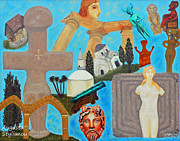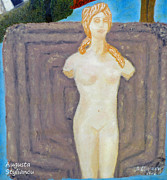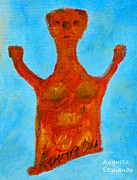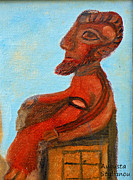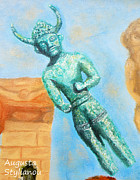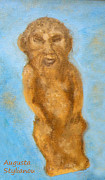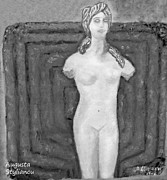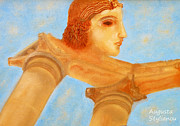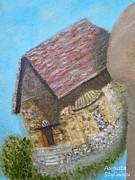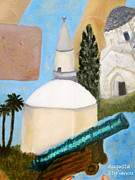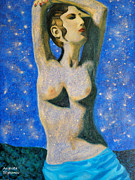Cyprus HistoryAphrodite Paintingsprints-Posters |
||||||||||||||||||||
|---|---|---|---|---|---|---|---|---|---|---|---|---|---|---|---|---|---|---|---|---|
|
Cyprus HistoryTrying to include in my art works a painting of the history of Cyprus, I thought that a characteristic would be the religious influence left behind by each conqueror of the island as well as the depiction of wars that prevailed through the centuries. A history of many centuries full of wars and conquests. A conqueror succeeded the other and the population had to endure and to hope that the next conqueror would be better than the precedent. However this was not the case as the conqueror preceding the last was about to be the worst for the history and the future of Cyprus. The Ottoman conquest was proven to be the worst because as a result was the invasion in 1974 and the occupation of 38% of the island. The history of Greek culture has been alienated, destroyed and conquered by the Turkish intruder that tries to degrade and to eliminate and to impose his own culture ignoring a culture history of thousands of years. It is deplorable for a person to see the losses of his culture and for this reason I wanted with my own way to portray via the art a short optical retrospection of the past and the history of Cyprus.
Tweet
Chronologically beginning we see (on the right bottom side) a symbol carved in stone, the symbol of fertility ( Earth Goddess) that was found in the Settlement of Choirokoitia, at the Neolithic period.
Behind is the Goddess Astarte , with a birth face embracing a child. She is a Phoenician Goddess which was worshipped at the 4th approximately millennium and she was likely the Goddess of fertility and hunting.
Next to her we see the Goddess with the lifted hands for which we do not know what exactly she symbolizes.
Around 3000 BC. we have a replacement of the Goddess Astarte with the Cross-like figurine of Pomos (left) a symbol also of fertility and characteristic of a matriarchal society.
Progressively the matriarchal period ends and we have the creation of various male Gods as the one that seats on a throne and has horns (right side behind). It is believed that he was the God Ares or some important king.
Next again The Horned God from Egkomi is portrayed who belongs in the later period of copper of the 12th century BC. It is considered that he was the God of Trade.
Next is portrayed the the lion-like God with clearly Egyptian influence and which was found in ancient Amathounta.
The adoration of the Goddess Venus began from 3000 BC in Palaipafo without however proofs for a continuous adoration. The statue is the the Goddess Venus of Soloi first century BC that was symbol of Beauty and Love.
Later we have the predominance of the twelve Olympian Gods. Simultaneously with the Goddess Venus we have the God Zeus (in the centre) as the Father of all Gods.
Also we have Apollo Hylates (on the center) the God of light, music, and forests.
The adoration of the twelve Olympian Gods progressively was replaced by the Christian Religion. The Occupation of the Francs was a example of the predominance of Christianity in the island and Abbey of Bellapais( left below) was one of the most important monasteries.
Sample of Occidental influence in Cyprus The church of Virgin Mary of Asinou, building of 1099 constitutes an other example of predominance of Byzantine Empire in Cyprus.
In the centre of the painting we have a modern Christian church (as an example the Church of Saint Andronikos in Liopetri and the cannon separates it from the Mosque of Hala Sultan Tekke in Larnaca, and assumed to be a reason of the segregation of the Christian and Moslem population.
This is the history of Cyprus that due to her various conquerors, had the occasion to learn and to worship many and different Gods, who however did not protect Cyprus neither from wars nor from unfairness.
FamagustaKyreniaChoirokoitia
|
|||||||||||||||||||

